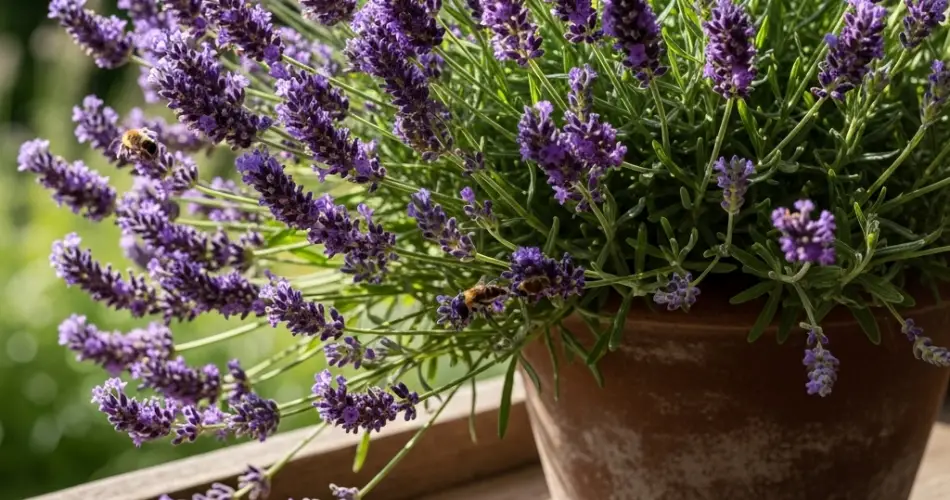Lavender is a timeless herb admired for its calming fragrance, beautiful purple blooms, and versatility in both the garden and home. While often grown in garden beds, lavender also thrives in containers, making it accessible to those with limited outdoor space. Growing lavender in pots allows you to bring its beauty and soothing aroma right to your doorstep—whether on a sunny balcony, patio, or even indoors with sufficient light. This guide will walk you through how to successfully cultivate and care for lavender in containers to enjoy its flowers and fragrance all season long.
Why Grow Lavender in Containers?
Growing lavender in pots has distinct benefits:
-
Mobility: Easily move lavender pots to sunny locations or shelter them from harsh weather.
-
Space Efficiency: Perfect for patios, balconies, or indoor settings where garden space is limited.
-
Control: Manage soil conditions and drainage more effectively in containers.
-
Year-Round Enjoyment: With proper care, you can enjoy fresh lavender blooms and scent throughout the growing season.
Choosing the Right Container for Lavender
The container you select can make a big difference in lavender’s health:
-
Size: Use a pot that is at least 12-14 inches wide and deep to accommodate lavender’s extensive root system.
-
Material: Terracotta or ceramic pots are excellent choices due to their breathability, which helps prevent waterlogging. Plastic pots retain moisture longer and require more careful watering.
-
Drainage: Ensure the pot has multiple drainage holes to allow excess water to escape and prevent root rot.
Best Soil for Container Lavender
Lavender requires well-draining soil to prevent root diseases and promote healthy growth:
-
Potting Mix: Use a sandy or gritty potting mix designed for Mediterranean or drought-tolerant plants. You can amend regular potting soil with perlite, coarse sand, or small gravel to improve drainage.
-
Soil pH: Lavender prefers slightly alkaline to neutral soil with a pH between 6.7 and 7.3.
-
Fertilization: Lavender thrives with minimal fertilization. Use a light application of balanced, slow-release fertilizer in early spring, or dilute a liquid fertilizer for occasional feeding during the growing season.
Light Requirements for Lavender
Lavender is a sun-loving plant and needs plenty of light to flourish:
-
Sunlight: Provide at least 6-8 hours of direct sunlight daily. Full sun promotes strong stems and abundant blooms.
-
Indoor Growing: Place pots near a south-facing window or supplement with grow lights providing 10-12 hours of light.
-
Rotation: Rotate the pot regularly to ensure even growth and prevent the plant from leaning toward the light.
Watering and Moisture Management
Proper watering is critical to keeping lavender healthy in containers:
-
Watering Frequency: Lavender prefers dry conditions and is drought tolerant. Allow the soil to dry out almost completely between waterings.
-
Watering Method: Water deeply but infrequently. Avoid overhead watering to keep foliage dry and reduce disease risk.
-
Drainage: Always empty excess water from saucers to prevent roots from sitting in water.
Pruning and Maintenance for Container Lavender
Regular pruning encourages bushy growth and abundant flowering:
-
Pruning: Trim back lavender plants in early spring and after flowering to maintain a compact shape and remove woody growth. Avoid cutting into old wood that may not regrow.
-
Deadheading: Remove spent flowers to promote continuous blooming.
-
Cleaning: Remove any dead or yellowing leaves to keep plants healthy and attractive.
Common Issues and How to Prevent Them
-
Root Rot: Caused by overwatering or poor drainage. Use well-draining soil and pots with drainage holes.
-
Leggy Growth: Results from insufficient sunlight. Move lavender to a sunnier spot or supplement with grow lights.
-
Powdery Mildew: Avoid overhead watering and ensure good air circulation around the plant.
-
Pests: Watch for aphids or spider mites. Treat infestations early with insecticidal soap or neem oil.
Benefits of Growing Lavender in Containers
-
Aromatic Beauty: Lavender’s fragrant flowers bring soothing scents to your living space.
-
Versatility: Use fresh or dried lavender in cooking, crafts, or as natural air fresheners.
-
Therapeutic Qualities: Lavender is known for its calming effects and is often used in aromatherapy.
-
Decorative Appeal: The silvery foliage and purple blooms add charm and elegance to any setting.
Tips for Successful Container Lavender
-
Repotting: Refresh soil and repot every 2-3 years to promote healthy roots and growth.
-
Companion Plants: Lavender pairs well with rosemary, thyme, and sage in container herb gardens.
-
Good Airflow: Position pots where there is good air circulation to reduce fungal risks.
-
Winter Care: In colder climates, bring pots indoors or provide protection during winter months.
Conclusion
Growing lavender in containers is a rewarding way to enjoy its beauty and fragrance year-round. By choosing the right pot, providing plenty of sunlight, using well-draining soil, and watering judiciously, you can cultivate a thriving lavender plant that enhances your home with its charm and scent. Whether placed outdoors or indoors, container lavender adds a touch of Provence to your daily life.



